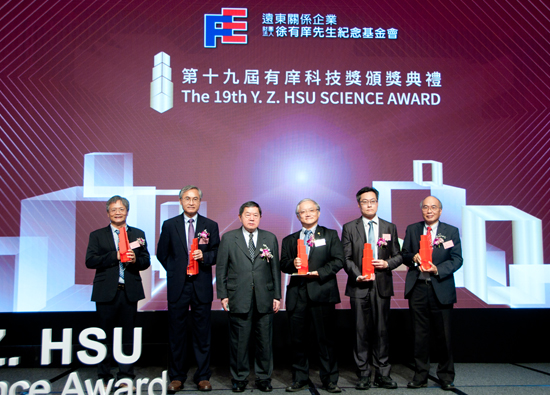12.2021 Leader's Remarks
The Future and Challenges of the Retail Industry
FEG Corporate Staff Office / Morris Yang


In 2021, the world is still under the strenuous impact of COVID-19, the global economy and life pattern were facing dynamic changes. Furthermore, geopolitics, competitions among world leaders, and volatile economic order brought tremendous stress on supply chain, as well as significant challenges to the retail industry which stays close to people’s lives. From the world’s landscape under the pandemic, I would like to share with you responses and adjustments made by the retail industry whilst facing changing operating environment.
 The Global Landscape under the Pandemic
The Global Landscape under the Pandemic
In 2021, the world political and economic landscape is still under the strain of COVID-19 as well as the increasing Sino-U.S. conflict. In addition, Afghanistan, located at the juncture of Europe and Asia, also brought new geopolitical complexities, coupled with the geopolitical struggle over Myanmar involving power plays among China, U.S., Russia, etc., any mishandling might further deteriorate the tension. Moreover, Evergreen container ship which was stranded in the Suez Canal caused worldwide disturbance to the shipping order. Also, the 14th Five-Year Plan of the People’s Republic of China, carbon neutrality policy, joining CPTPP, these issues are closely connected with the future developments of global industries.
Reflecting on the world situation, listed below are the factors affecting the economic developments in 2021:
1. Different Covid-19 Vaccination Progress in the World: There are large differences of rolling out vaccinations among countries, in particular for emerging markets and developing economies; despite the Delta variant having relatively mild impact on the economies with high inoculation rate, there are signs that indicate it still causes pressure on the overall confidence.
2. Global Supply Chain under Tension: The growth of industrial production and global commodity trade has slowed down, supply shortage and delayed delivery by the suppliers have compressed production; the gap between new orders and inventories has been enlarged, meaning decreased ability to immediately satisfy new orders.
3. Supply Chain and Cost Pressure Push up Commodity Prices: Export prices of many Asian economies have generally increased, due to the rising global bulk commodity prices, costs, that also reflects the impact of capacity restriction and disrupted supply chains.
4. Anticipated Uprising Inflation: Inflation index is expected to rise this year, in the U. S. OECD warns that inflation may rise, operating cost was heightened due to pandemic prevention and disrupted supply chains; however, capacity is expected to recover at yearend, added with consumption focus shifting toward service industries, hopefully to slow down the inflation.
Since 2021, with strong policy support, deployment of effective vaccines, and recoveries of many economic activities, the world economy has gradually regained momentum; also due to the lower base of the previous year, the global GDP in 2021 is expected to grow 5.6~6%. Therefore, various institutions predict Taiwan’s economic growth will maintain at 4~5% this year; however, under the impact of Level 3 restrictions, the retail industries, the department stores suffered significant declines in May~July. Facing the New Normal brought by the Coronavirus pandemic, if more extensive virus tests, treatments, and vaccines can be provided in addition to the stimulus policies. This can boost market supply and demand, the upward momentum of this year is expected to continue into 2022.
Responses and Adjustments of the Retail Industry
.jpg) The impact of the pandemic propels operating environment of the retail industry to quickly march into the New Normal. The following behavior changes and responding actions are worthy of our attention.
The impact of the pandemic propels operating environment of the retail industry to quickly march into the New Normal. The following behavior changes and responding actions are worthy of our attention.
1. Changes in Consumption Behaviors
According to eMarketer statistics, revenues of physical channel and e-commerce channel grew 4.1% and 27.6% respectively, indicating consumers changed their consumption behaviors during the pandemic period in response to quarantine and epidemic prevention needs and switched to online shopping; more than 60% of consumers expressed that even after the pandemic, they will still continue with online shopping services. However, the booming digital channels have seriously deteriorated the operations of physical channels; for example: JC Penney, MUJI USA, Roots, as well as L’OCCITAN, Global Brand Group all applied for bankruptcies this year.
2. Generation Z Gradually Becomes Major Consumers in the World
Aside from changing consumption behaviors, the emerging of major consumer groups is another point of attention. With the explosion of online shopping, Generation Z, the digital natives, have gradually become mainstream consumers. Facing young consumer groups, digital transformation and retail innovation have distinctly become priority strategies of every brand. Global brands have initiated youth branding outreach trends, Calvin Klein, CELINE, BALENCIAGA, BURBERRY actively changed their classic brand identities to transmit rebranding image and create dialogues with young consumer groups.
3. Experience and Social Needs
Wu Xiao-bo’s “China New Middle Class Report” indicates: Generation Z and Generation Y expect more interactive experiences and social needs; translating into shopping space, they focus more on restaurants, parent-child, and social bonding. On the other hand, product-oriented promotion of the traditional retailing is obsolete, retailers need to provide more attractive experiences, “engaging brand as a culture” becomes more substantial. UNIQLO began to bring in a coffee shop, a flower boutique, and a personalized T-Shirt production boutique on its 12th-floor flagship store in Ginza, Tokyo, transforming from “Made for All” to “Life Wear”.
4. Digitized Smart Retailing
Retailers have applied Artificial Intelligence to their various services, the technology adoptions include 2D/3D computer visual, natural language processing, AR & VR, sensor technologies, and robotic technologies, which can also promote the development of C2M (from customer to manufacturing). In the next few years, social network is not only the place where retailers can have interactions, but also the platform to engage with their customer groups. According to survey, 28% of online consumers will search merchandise information through social media, and purchase merchandises on that platform.
5. Omni-Channel to Optimize Customer Relation Management
According to report of Harvard Business Review, 73% of shoppers use omni-channels to search and purchase products. Retailers also apply this finding to provide flexible options for online and physical retailing. Studies indicate that both purchase rate and integration rate of consumers via omni-channels are much higher than that of a single channel; more worth noting is the omni-channel mode provides strong support in terms of consumer adhesion.
6. Supreme Efficient Payment and Delivery Services
Convenient payment system can boost retailing. About 48% of retail experts express those mobile technologies will lead future retailing payment services; the U. S. retail market also predicts that average annual payment amount of mobile payment users will grow quickly. Most retailers know that delivery time is most crucial, but they also recognize that consumers are sensitive about delivery time. 98% of consumers express: Speedy merchandise delivery is an important factor for brand loyalty.
7. Focus on Operating Cost and Efficiency
According to statistics, gross margin of North American and European retailers dropped significantly from 8% in 2011 to 5% in 2019. While retail profit is under increasing pressure, the post-pandemic economic uncertainties and fluctuations have been intensified. As the traditional cost control is no longer sufficient to spur profit growth, and is not able to ensure future business developments, therefore retailers should focus more on merchandise margin, sales per ping, manpower efficiency, and proactive adoption of automatic services.
8. Emphasize on Sustainability and Eco-Friendliness
Consumers express that they prefer brands with more active environmental awareness; retailing trend report predicts that this change represents US$1.1 billion market size worth of branding and potential of sustainability.
 Conclusion
Conclusion
In the video published recently by Bain & Company titled “The Future of Retail in Asia”, retailers are being reminded to continuously focus on the following points: Development of retail ecosystem value chain, strengthening the application of digital payment, changing role of physical stores, last mile – fast merchandise logistics, and the application of technologies in supply chain management. More importantly, retailers must have talent to execute digital strategies.
Retail development continues to change, facing with these dynamics, we can choose to ignore, or seize the opportunities to make a difference. Finally, I would like to share with you a quote from a U. S. writer Gail Sheehy: “If we don’t change, we don’t grow. If we don’t grow, we aren’t really living.” Hope we can all seize the opportunities for change, and achieve excellent performance.(From Chairman Douglas Hsu’s speech at the 2021 Vendors’ Party of Far Eastern Department Stores.)
#



















